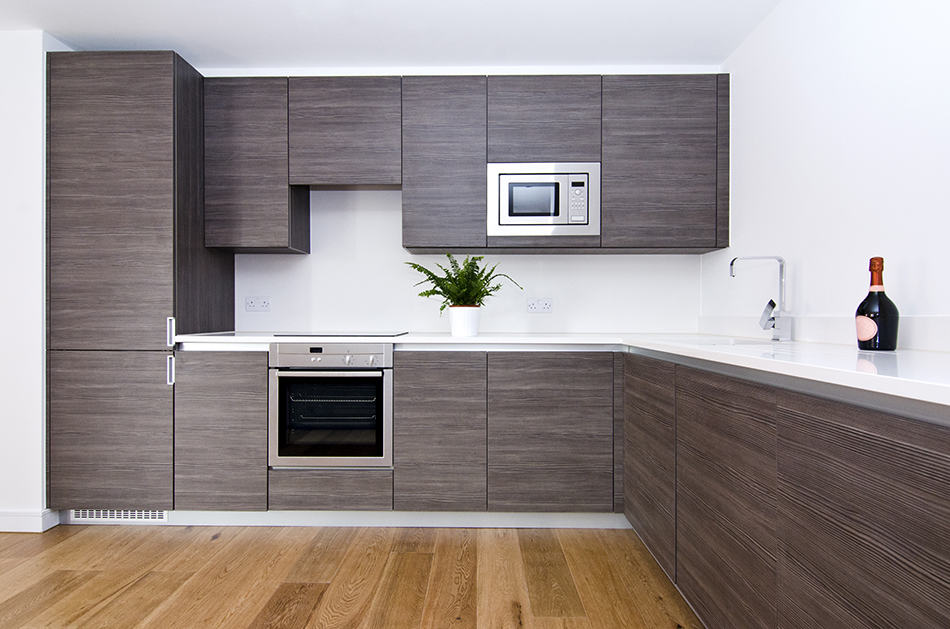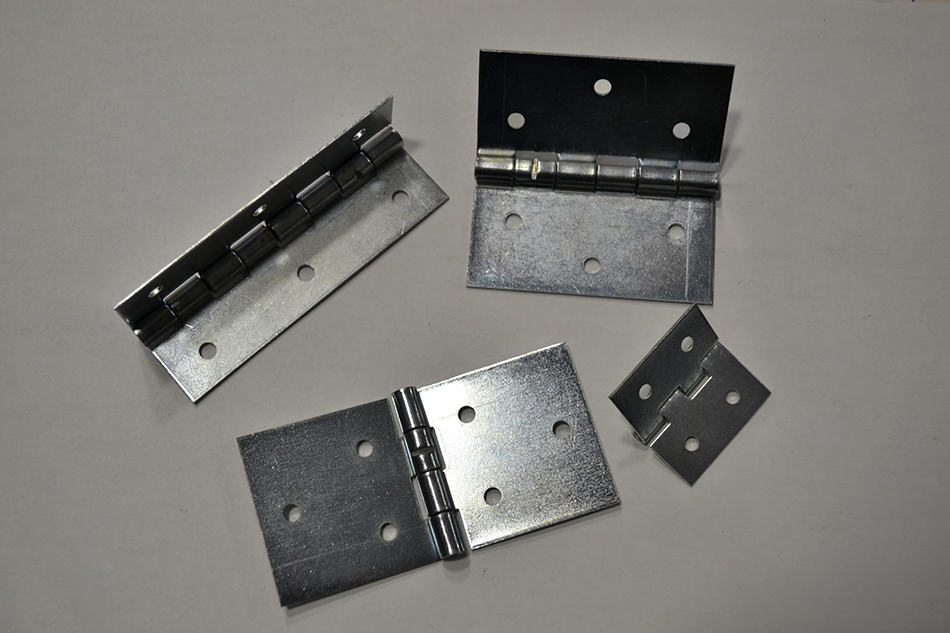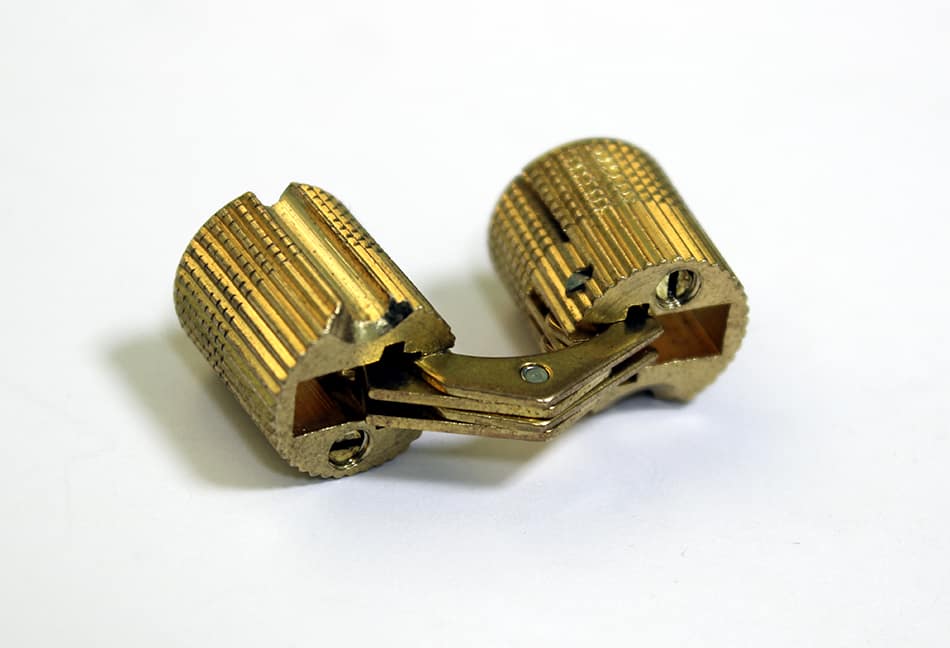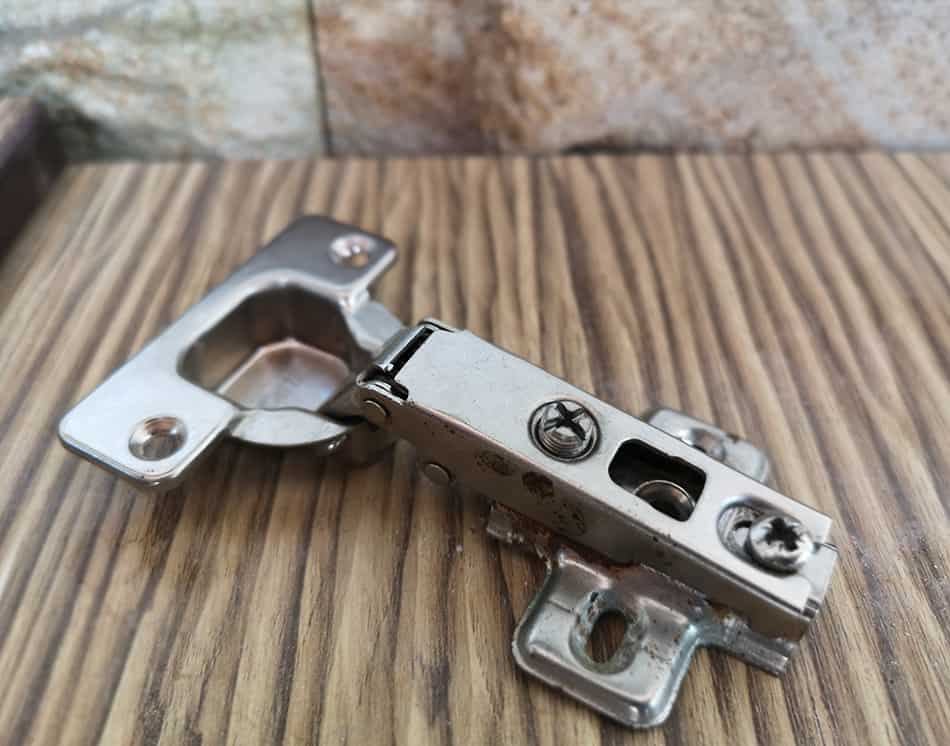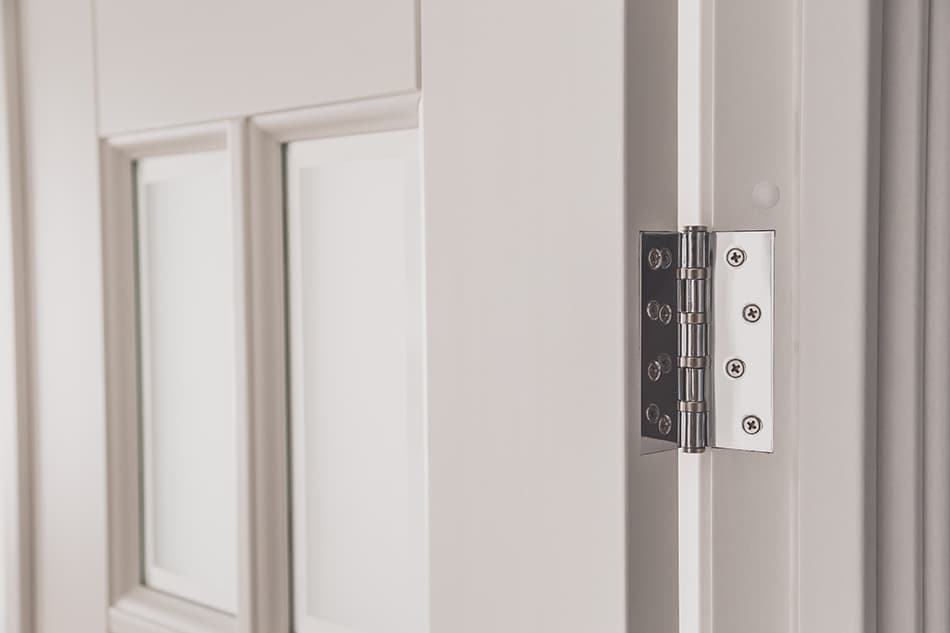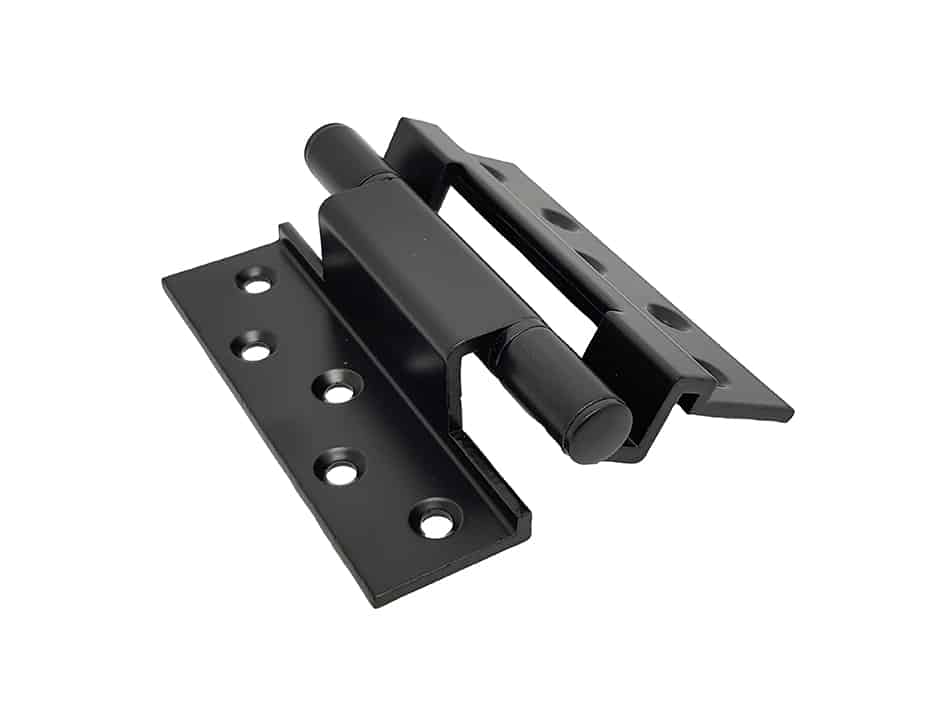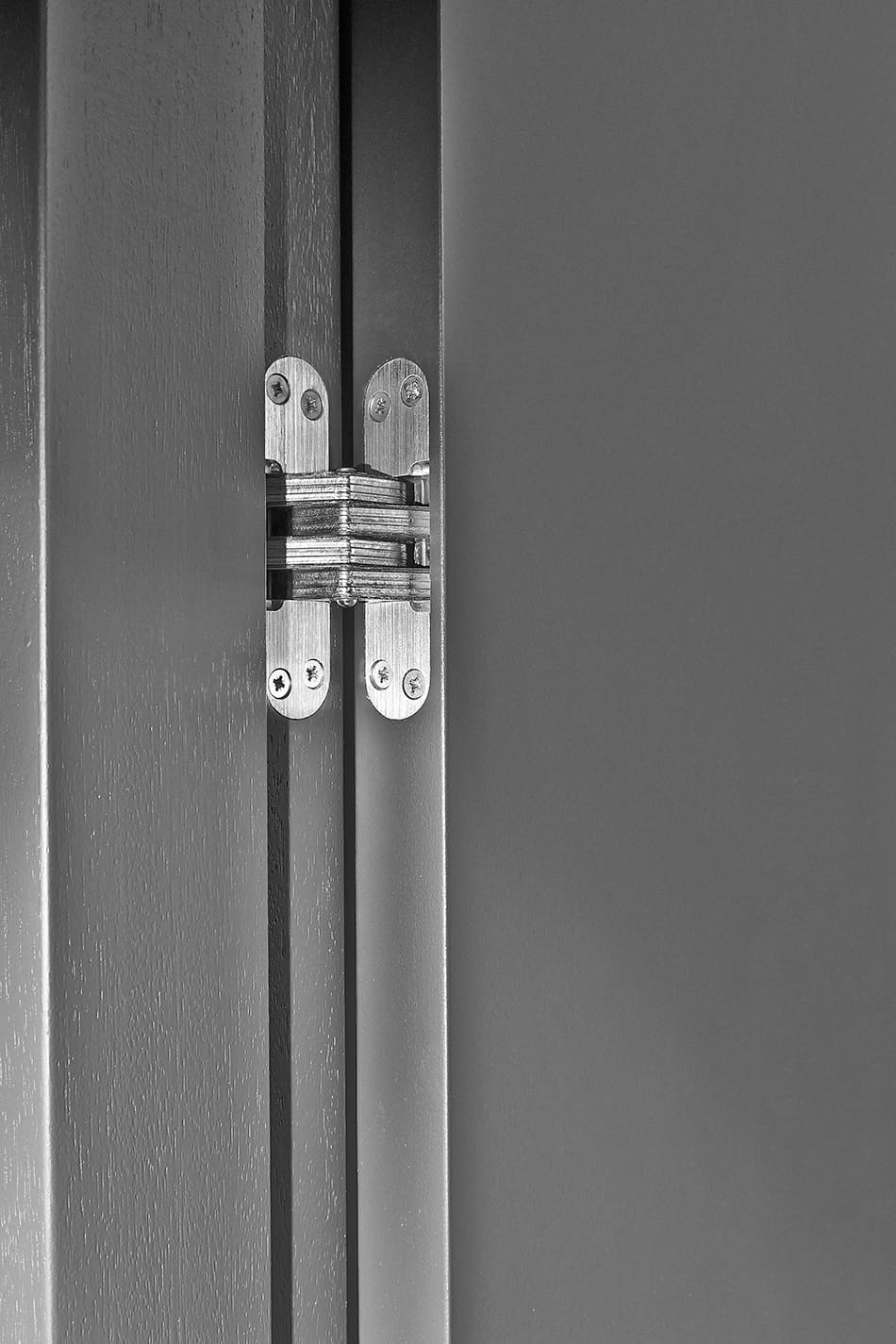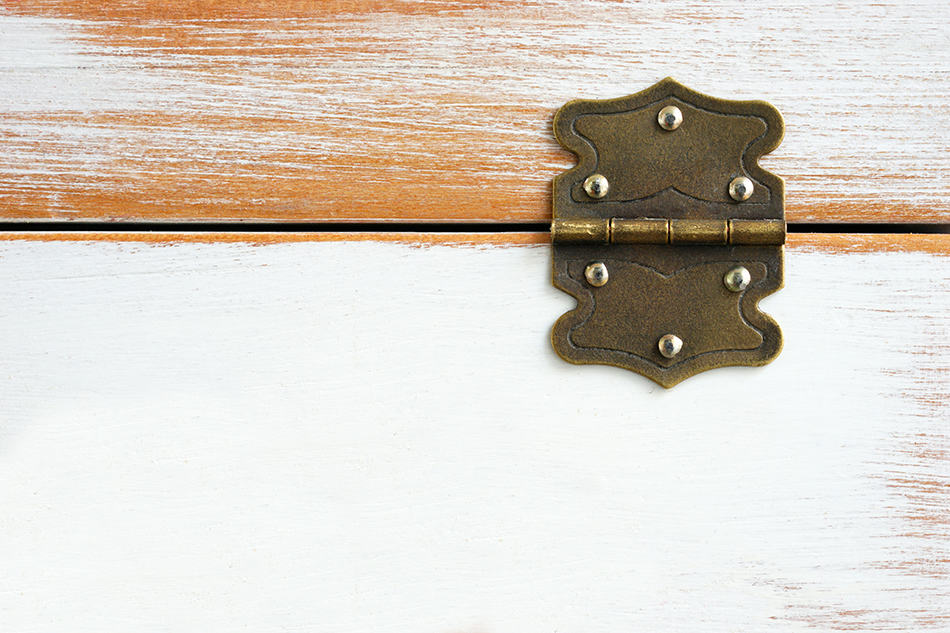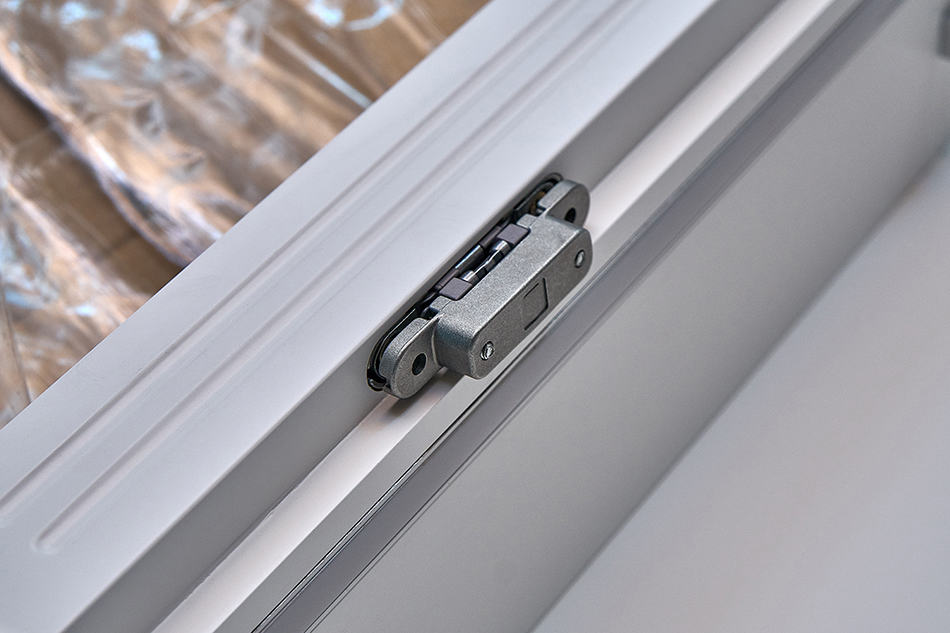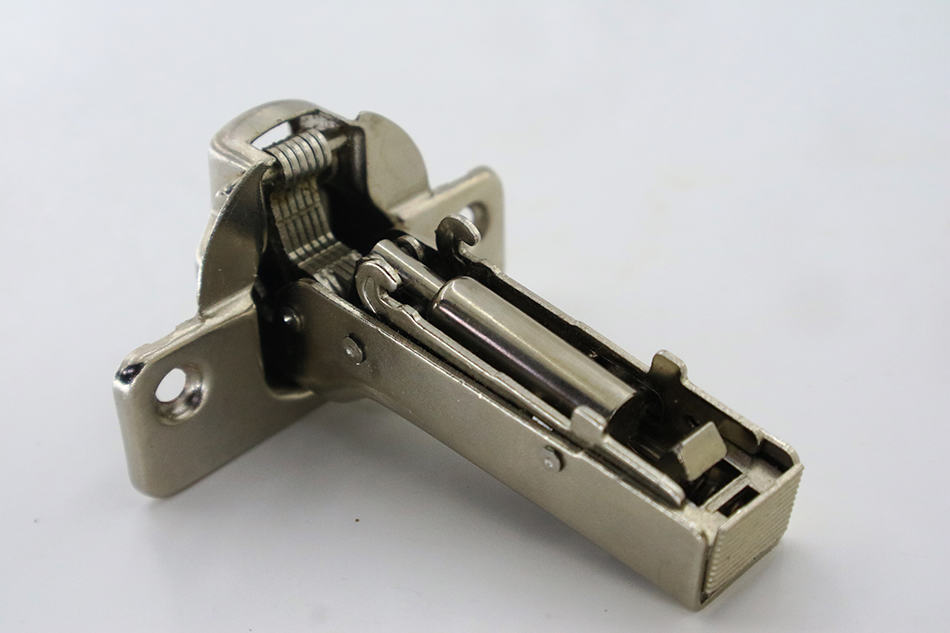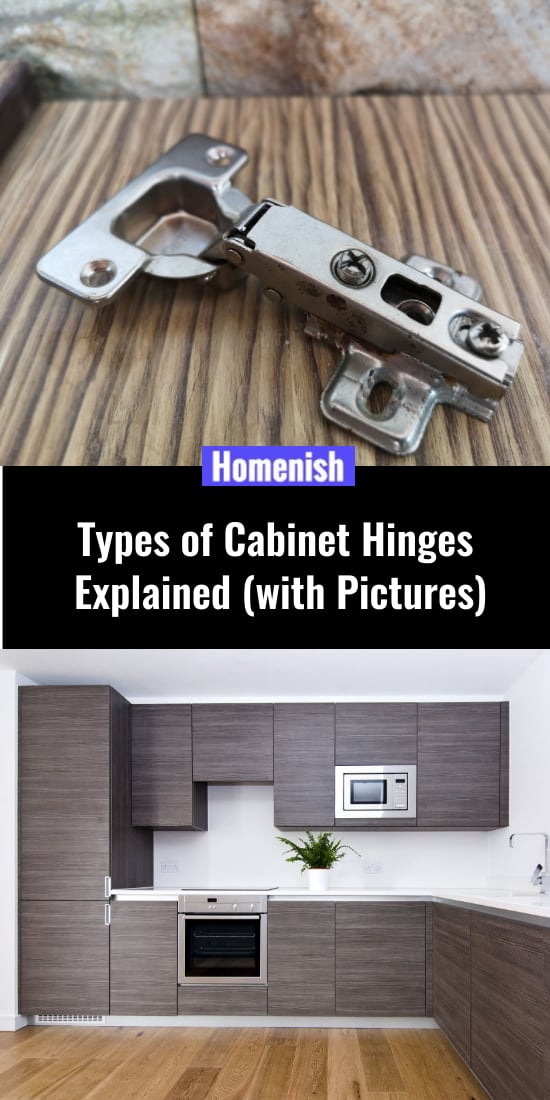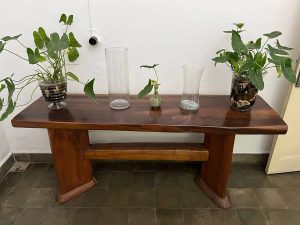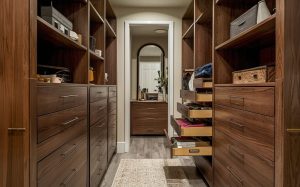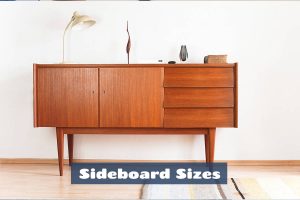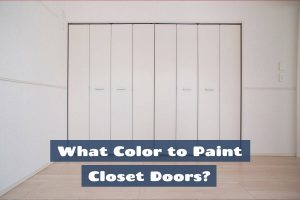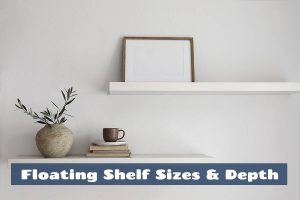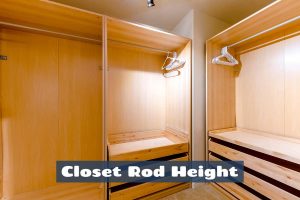If you’ve ever gone to a hardware store to look for a set of cabinet hinges, you will probably have discovered there are an overwhelming number of choices. To ensure you get the correct hinge for your cabinets, learn about the main types here.
Cabinet Hinge Types
1. Butt Hinge
These types of hinges have two sides that face each other and are joined in the middle by a ball joint or pin joint. This is a simple design that is used for many different types of cabinets and is popular because of its simplicity and reliability. One side of the hinge fixes to the main frame of the cabinet, while the other side will be fixed to the cabinet door. They are easy to install and could be fitted without difficulty by anyone who owns a screwdriver.
These hinges are fairly inexpensive and should be easy to find in the hardware section of any home store. Take into consideration that some of this hinge will be visible on your cabinet even when the door is closed, so choose a color and finish of metal that you are happy with.
2. Barrel Hinge
Barrel hinges are a good option if you want a hinge that cannot be seen on your cabinet. These hinges are most commonly used in woodworking for items with lids such as jewelry boxes or other wooden storage boxes, but they work equally well in cabinetry. Barrel hinges need to be correctly sized to match the thickness of the cabinet, as they come in various heights and depths.
These are slightly more tricky to fit than hinges that sit on top of the surface of the cabinet and may require a carpenter or professional cabinet fitter to install. Using a drill bit, a hole the same width as the barrel hinge needs to be drilled into the edge of the cabinet door, and a matching hole drilled into the cabinet frame. The barrel hinges then slot into place and are connected by an arm that allows the cabinet to open and close.
3. Face Frame Hinge
These hinges are invisible from the outside of the cabinet and can only be seen when you open the cabinet door. They are easy to install, operate reliable, do not alter the look of your cabinets, and are inexpensive. All of these attributes make them very popular, and in fact, they are the most commonly used types of hinges for cabinets in the United States.
Upon seeing this hinge, you will quickly figure out how it works. One side of the face frame will be fitted to the interior of the cabinet, with the other is fitted to the back of the cabinet door. These are usually available in brushed or stainless steel, which prevents them from becoming rusty if they are used in a room with high moisture levels, such as in a bathroom. The color of the metal is not typically an important consideration because the hinges will not be seen from the outside of the cabinet.
4. Flush Hinge
A flush hinge is so-called because when it is closed, one side of the hinge sits inside the other side, making it entirely flush. It operates in a similar way to a butt hinge, in that one side is fixed to the cabinet, and the other side is fixed to the door. The main benefit of this hinge is that due to its design and ability to be flush when closed, it is more slimline and takes up less space inside a cabinet. It is also easier and typically takes less time to install than a butt hinge. Like a butt hinge, though, these hinges can be seen from the exterior of the cabinet, so you will need to choose a color and finish you are happy with.
5. Inset Hinge
An inset hinge is typically quite decorative. This is because their design means that one half of the hinge gets fitted to the outside of the cabinet, and therefore can be seen when the door is closed. Inset hinges have one narrow side, and it is this part that will be seen. The other side of the hinge is wide and rectangular or square-shaped and fixes to the inside of the cabinet door. This is a more old-fashioned type of hinge that is commonly seen on kitchen cabinets in older homes. If you choose an inset hinge, pay careful attention to the decorative portion of the hinge because it will be on display.
6. Half Overlay Hinge
The term overlay refers to a certain way that the doors of a cabinet sit on the frame. Overlay cabinets are where the cupboard doors sit on top of the frame and entirely cover the frame so that none of it can be seen; the opposite of this would be an inset frame where the cabinet door slots perfectly inside the frame.
A half overlay cabinet is where two doors sit over the top of a frame and meet in the middle. Behind the closing edge of the two doors, at the point where they meet, will be a central post or partitioning wall. These types of cabinet doors require a half overlay hinge, which is attached to the partitioning wall, and allow both doors to open and close snugly against each other without hitting each other. These hinges need to be small to allow them to both fit on the central partition. The look of these hinges is not considered to be important because they won’t be seen when the doors are closed.
7. Full Overlay Hinge
A full overlay hinge is suitable for a single cabinet door that covers the whole of its individual cabinet frame. These hinges attach to both the inside of the cabinet door and the inside of the cabinet frame. They cannot be seen from the outside of the cabinet.
8. Pivot Hinge
Pivot hinges are great on cabinets that have inset doors, and you don’t want any of the hinges to be visible. They are commonly found on smaller cabinets or on freestanding pieces of furniture with doors, such as TV units.
These work with a hinge at the base of the cabinet door, and one at the very top. There are two flat pieces, one of that is fixed to the cabinet frame, and one to the top and these are attached via a metal column that slots in between the two and allows the door to pivot open and closed. These hinges have to be very low profile in order to work seamlessly and prevent them from being seen. They give a smooth open and closing of a cabinet, but they don’t hold a lot of weight, which is why they aren’t usually used on very large cabinets.
9. Offset Hinge
Offset hinges are for cabinets that have marginally protruding doors. This might happen if the cabinet doors are thicker than the cabinet frame. An offset hinge has two parts, which do not line up perfectly, allowing you to adjust them to allow for the protruding door. This will ensure that your cabinet doors can open without hitting the frame or getting stuck. These hinges are fitted to the outside of the cabinet, with one side on the door and one side on the frame. As they will be visible, they come in a range of designs to fit with varying interior styles, including different colors of metal and different finishes.
10. Invisible Hinge
Invisible hinges are sometimes also known as concealed hinges. They tend to be very small and fit on the inside of a cabinet. They are popular for instances where you don’t want a hinge to be visible, and even when the cabinet door is open, this type of hinge is very discreet and will not be easily noticeable.
11. Strap Hinge
This hinge is so-called because it looks like a long strap, a little like a bandage that attaches the cabinet door to the frame. These are great for larger cabinets or cabinets made from heavy materials because they are able to support a lot of weight. They have two long wings that are joined in the middle. These are common on garden gates and other large doors due to their ability to hold a lot of weight, but they can also work well on cabinets. They come in various designs to suit different styles, as they can be seen from the outside of the cabinet.
12. Wraparound Hinge
Wraparound hinges have a bracket that attaches to the inside and outside of the cabinet frame, literally wrapping itself around the frame. A further piece then extends out of the hinge and joins to the interior of the cabinet door. These hinges are very sturdy and can support a lot of weight, so they are great for large cabinets or doors that are very heavy. They can be seen from the outside of the cabinet, so be sure to choose a design you’re happy with.
13. Frameless Hinge
These hinges are also known as surface mount hinges because they are fixed onto the surface of the cabinetry and don’t require a mortice to be created, making them very easy to fit. They are adjustable, allowing you to alter them to allow a door to open and close at exactly the right angle. They are mounted to the inside of both the cabinet door and frame, making for an invisible hinge once the door is closed.
Cabinet Hinge Features
A. Decorative
Decorative hinges can be those that are functional and also have a decorative look, or they can be faux hinges that offer no purpose other than aesthetics. A decorative hinge can give a certain look to your cabinets, making them look modern, ornate, or rustic, depending on the hinge you choose. Decorative hinges will come in a wide range of colors and finishes, such as matte black, glossy copper, stainless steel, gold, and rose gold.
B. Hidden
Hidden hinges, as you may have predicted, are those that cannot be seen from the outside of the cabinet. There are various types of hinges that can fit into this category, and the one you need will be decided by your cabinet type. Some hidden hinges will be completely invisible when the door of the cabinet is closed, while some will be low profile and discreet, though not entirely removed from view.
C. Heavy Duty
Heavy-duty hinges are those that are required for especially large or heavy cabinets, and these would most typically be found in commercial or industrial facilities. They work well for very heavy cabinets, such as those made from large sheets of metal or chunky wood. Heavy-duty hinges are rarely found in homes as they are not usually necessary. They tend to be large themselves, in order to be able to support hefty weights.
D. Demountable
Demountable hinges come apart in the middle, allowing you to remove a door without having to remove the hinge. This is useful if you want to remove doors for easy cleaning, especially if they are high up and, therefore, difficult to wipe down properly while in place. Doors with demountable hinges can quickly be fixed back in place, requiring no tools or difficult maneuvers.
E. Soft Closing
Soft closing hinges are becoming more popular on kitchen cabinets, especially as a feature in high end or modern kitchens. This type of hinge requires the door to be manually pushed close by the user, but just before the cabinet reaches the fully closed position, the hinge itself will take over and slow down the closing process. This results in a ‘soft close,’ preventing the cabinet door from being slammed close, and inhibiting any sound you might usually hear when closing a cabinet door.
F. Self-Closing
A self-closing hinge can be hydraulic or spring-loaded. Either way, these types of hinges use the weight of the door to close themselves. They are common on lockers, where a wall of doors that had been left open might look unsightly or present a hazard.
